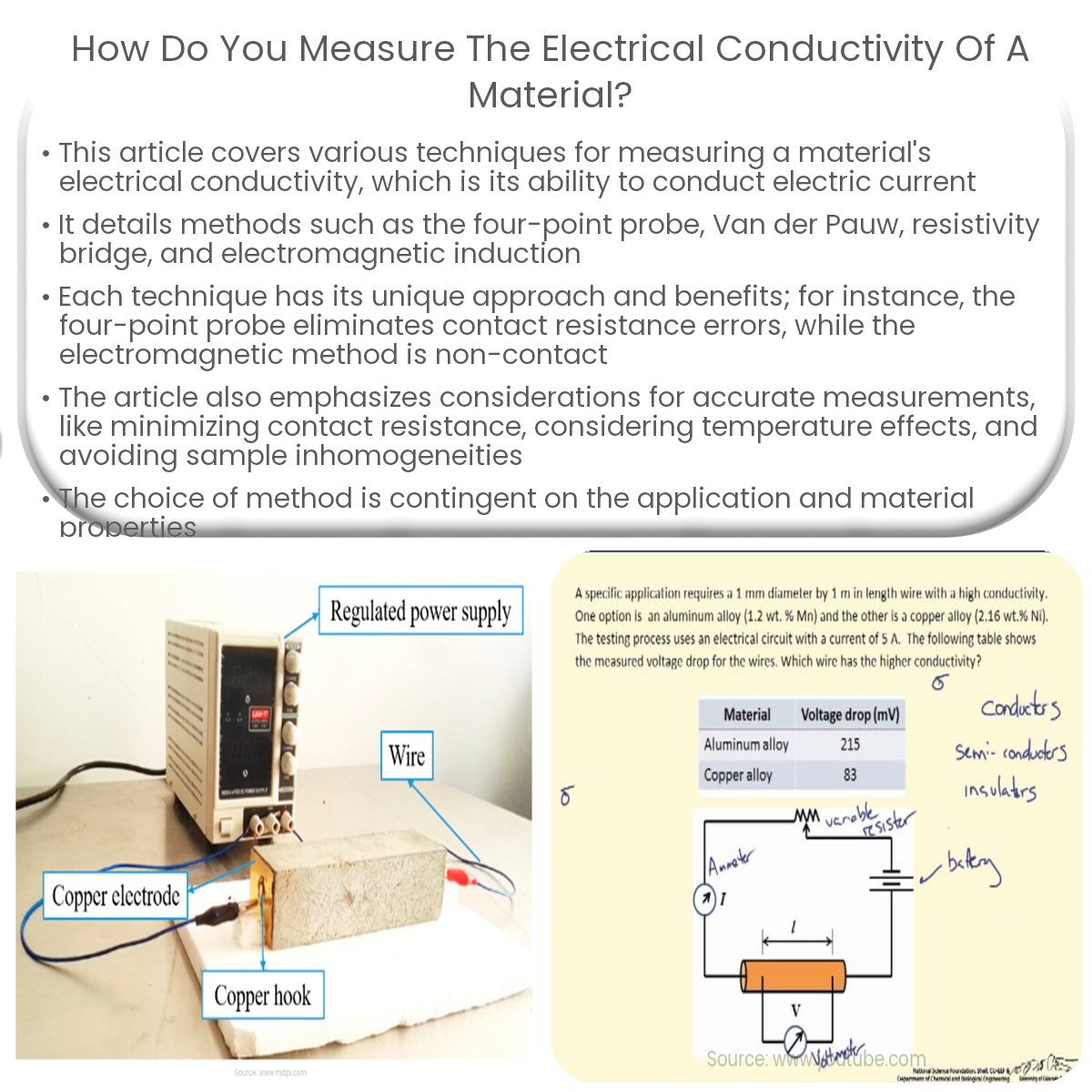To measure electrical conductivity, common methods include the four-point probe, Van der Pauw, resistivity bridge, and electromagnetic induction methods.
Measuring Electrical Conductivity of a Material
Electrical conductivity is a measure of a material’s ability to conduct electric current. To measure the conductivity of a material, several methods and techniques can be employed. This article outlines the most common methods used for measuring electrical conductivity.
Four-Point Probe Method
The four-point probe method is a popular technique for measuring electrical conductivity, as it eliminates contact resistance errors associated with the measurement. The method involves placing four equally spaced probes on the surface of the material being tested. A constant current is passed through the outer probes, and the voltage drop is measured across the inner probes. The conductivity can then be calculated using the measured voltage and current values.
Van der Pauw Method
The Van der Pauw method is another technique used to measure electrical conductivity. It involves placing four contacts on the perimeter of a thin, flat sample. A current is passed between two adjacent contacts, and the voltage is measured across the other two. This process is repeated for different contact configurations, and the conductivity is calculated from the voltage and current measurements.
Resistivity Bridge Method
The resistivity bridge method is a widely used technique for measuring the electrical conductivity of materials. It involves connecting the sample material to a Wheatstone bridge circuit, which compares the unknown resistance of the sample to a known resistance. By measuring the voltage across the bridge, the resistance of the sample can be determined, and its conductivity can be calculated.
Electromagnetic Induction Method
This non-contact method measures the electrical conductivity of a material by inducing an electric current within it. An alternating magnetic field is generated by a primary coil, which induces eddy currents in the sample. These eddy currents generate a secondary magnetic field, which is detected by a secondary coil. The conductivity of the material can be inferred from the amplitude and phase of the secondary magnetic field.
Considerations for Accurate Measurements
- Ensure a good contact between the probes and the material to minimize contact resistance.
- Take temperature effects into account, as conductivity may change with temperature.
- Avoid inhomogeneities in the sample, as they may cause variations in conductivity.
- Consider the frequency of the applied current, as some materials may exhibit different conductivities at different frequencies.
In conclusion, several methods can be used to measure the electrical conductivity of a material, each with its advantages and disadvantages. The choice of method depends on the specific application and the properties of the material being tested.


